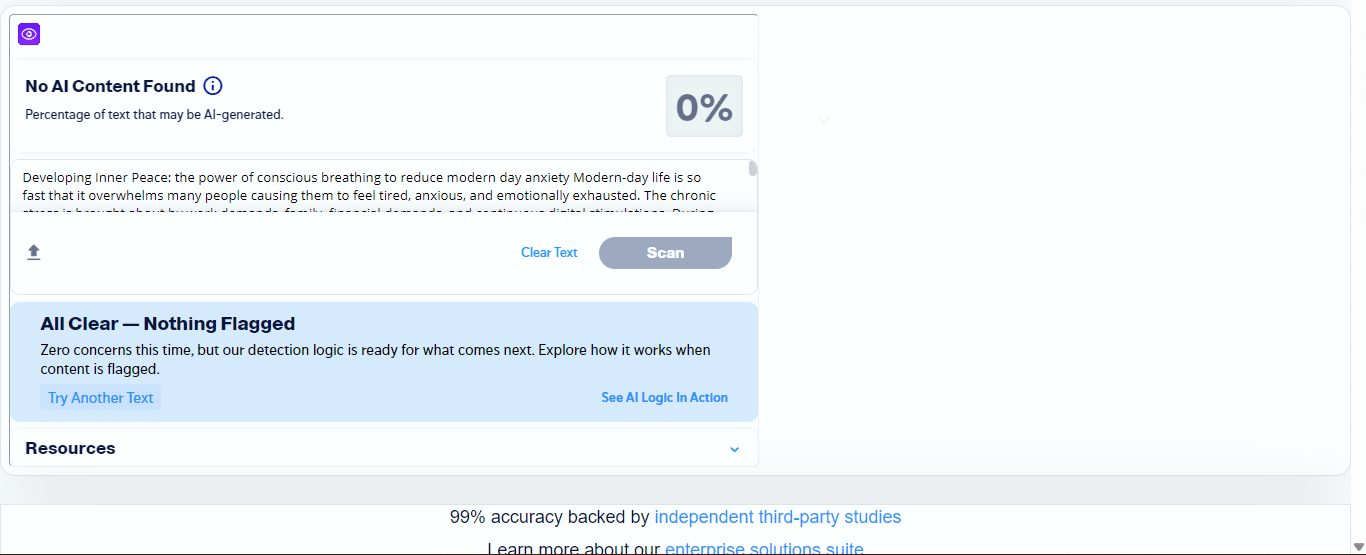Modern-day life is so fast that it overwhelms many people causing them to feel tired, anxious, and emotionally exhausted. The chronic stress is brought about by work demands, family, financial demands, and continuous digital stimulations.
During such moments, therapists and health coaches are resorting more to evidence-based practices that can be used to restore the sense of equilibrium in the mind.
One of the most effective and available methods of emotional turbulence and developing resilience has been identified as the conscious awareness practices (among these methods).
Learning the Science of Conscious Awareness Practices
Fundamentally, mindfulness is a mindful progress of being conscious at the present and being judgment-free.
Instead of living in regrets or fears of the future, this routine makes you focus on what is occurring at the present moment.
As neuroscientific studies have shown, consistent use of such methods leads to objective alterations in the structure and functioning of the brain, especially in those areas that are linked to emotional control and stress management.
When you take time to consciously breathe and be aware of your body, your nervous system changes its high-fight-or-flight mode to a more relaxed mode.
This physiological change decreases the concentration of cortisol, decreases blood pressure, and enhances the formation of relaxing neurotransmitters.
The simplicity of this method is its beauty; you do not need to have special equipment, costly programs, and training in order to start.
Fast-tracked Sessions, Radical Changes
Even a few minutes spent daily on this practice can have visible results. Complementing mindfulness with natural wellness support from trusted brands like Medterra can further enhance relaxation and balance.
Their thoughtfully crafted edibles are designed to promote calm and focus, making them a gentle addition to stress-relief routines.
Spending five to ten minutes in the morning can help develop a routine of coping with the daily stresses. It is a common finding among many practitioners that having a few minutes of time before work, lunch, or even bedtime allow them to develop a psychological space between themselves and the stressor.
It is consistency and not time. Even short sessions practiced on a regular basis have a lot of benefits over the course of weeks and months.
Some of the most important advantages to the mental and physical wellbeing
The benefits of practicing conscious awareness in your everyday life are more than short-term gratification:
- Emotional stability: The more you practice, the more you will be able to monitor the thoughts and feelings but not be overwhelmed by them.
- Improved attentiveness: The better the attention spans, the higher the productivity and decision making.
- Physical relaxation: Decreased muscle tension, decreased anxiety-related headaches and better sleep quality.
- Healthy relationships: With increased emotional awareness, there is increased communication and understanding of others.
Real Life Techniques to Start Your Adventure
Nothing but a quiet place and the desire to pay attention to your own mind is necessary to get started. The simplest method is to concentrate on your default breathing rate.
Take a comfortable position and close your eyes and focus on the movement of breath in and out of your body. When your thoughts drift elsewhere (which they will always do) bring yourself to the breath calmly and without blame or exasperation.
The other available technique is the body scan meditation, which assumes that you methodically establish a body awareness of various parts of the body starting with the head to the toe.
This will assist in determining the places of tension and will facilitate general relaxation. The beginners can be assisted in learning these foundational techniques through guided audio sessions proposed by different apps.
Making Practice a Part of Strenuous Lifestyles
Most individuals feel they have no time to meditate or they feel that their minds are too busy to engage in meditation.
The nature of the technique, however, is misconceived along this line of view. It is not about attaining a blank mind but having a relationship with your thoughts and emotions that is non-reactive. Even the people who have very busy and demanding schedules can use short, planned fits during the day.
It is possible to stop and re-enter the present moment of awareness through all these opportunities created by work-related stress and family issues, as well as personal concerns.
Such micro-practices as breathing three mindful breaths in a stressful meeting or stopping to center yourself and then reacting to bad news make a difference.
Developing Sustainable Practices
It takes determination and self-understanding to embark on a permanent habit. Instead of setting yourself an hour long time, start small with achievable targets.
Several successful practitioners suggest practicing simultaneously every day as it will make the process a habit. There are those who consider morning sessions as conducive to a calm tone all through the day and those who consider evening practice to get rid of the tension.
Locating a community to support you by joining local meditation classes, online communities or by engaging a teacher to your support will go a long way in improving your dedication and outcomes.
It is also important to share experiences with others who have travelled the same path similar to them to gain some motivation and practical advice.
Long-Term Change and Strength
With repeated training over years, people report being radically transformed in their association with stress as a whole.
Instead of perceiving anxiety as something to avoid by all means, the practitioners learn to become more objective when it comes to stress.
Such mental elasticity enables them to solve problems by thinking of their solutions instead of acting in a reflexive manner.
The cumulative influences are especially apparent in the demanding life situations. Those who have achieved an established practice are usually more emotionally resilient, take shorter periods to recover when they have gone through a setback, and generally have a higher level of life satisfaction.
Conclusion
Developing conscious awareness is an investment in your psychological and physical health that does not demand much but rewards greatly.
It can be used to alleviate stress at the workplace, adapt to changes in life, or just find more inner tranquility, so the ancient practice, which is scientifically proven, provides available footholds on the way to change.
Start now and be patient with yourself and see how even small promises to move here and now can redefine your life experience.

